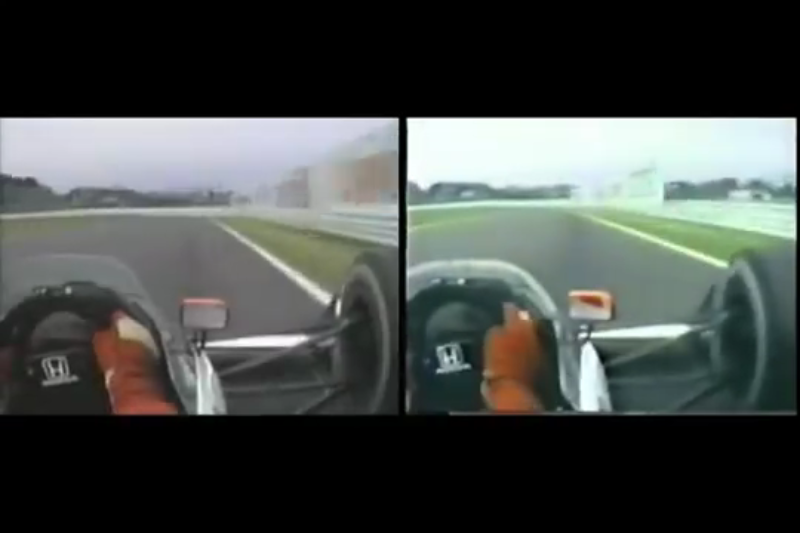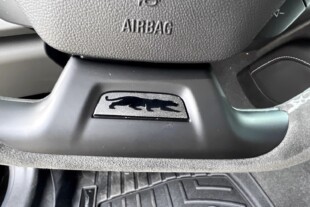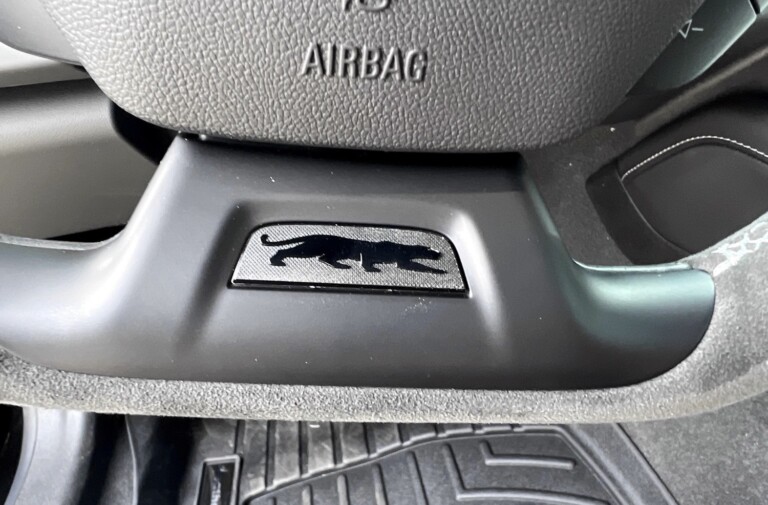Much about Senna and Prost’s fraught rivalry tends to divide the viewing audience. To be a fan of both drivers is considered among some to be sacrilege, and each camp stands proudly by their reasons. Perhaps, if we can refrain from bickering about who’s the best, we can appreciate two drivers at the top of their game, driving the same car, at the same track, and get a better sense of how they approached one quick lap.
The stage is the Japanese Grand Prix, 1989, where a shameful crash between the two McLaren drivers resulted in Senna losing that year’s championship. However, before the two collided at the Casio Chicane, they put on an incredible show in qualifying, and showed just how they mastered the McLaren MP4/5 and its mellifluous Honda V10.
Thankfully, the video’s editor managed to differentiate the engine notes. Senna’s engine is higher-pitched, and his throttle application is less fluid than Prost.
First Turn
Known for his one-lap fireworks, the Brazilian is undoubtedly the more committed of the two. Everything about his steering and throttle control suggest he’s desperate to get the car into and out of the corner as quickly as possible; even if it means driving the car on the ragged edge. Though he’s actually slightly slower into the first corner, he gets on the throttle leaving Turn 2 fractionally earlier and much harder, as seen by the quick flick of opposite lock.
The Esses
Senna also turns the car in slightly later and with more emphasis than Prost does. Note the location of the billboards to the right just prior to the first left, Turn 3, beginning the long series of esses. Prost eases the car into the corner much less abruptly than Senna, and he also does so three car lengths earlier.
Throughout the esses, Senna uses more of the track, while Prost’s line is shallower and his rate of steering slower. To do this, he changes his throttle position accordingly with buttery finesse, whereas Senna almost flicks the car in, dances the rear around slightly, and gets back on the throttle with more urgency. Keeping the rhythm and right line through this section is important, since a slide compromises speed through the rest of the esses. Of course, this is where the silky-smooth Prost is closest the entire lap — discounting the following Dunlop Curve (0:32), where downforce minimizes the differences in their styles.
Degner
The following high-speed right, Senna noticeably releases the brakes earlier and carries a good deal more entry speed (0:36), while still keeping the car squarely settled. In Prost’s defense, he had a backmarker ahead, and was likely trying to avoid an accident.
Turn 9
Next: the right-hand Turn 9. A deceptively tight corner; its exit tends to lure drivers into the dirt. It also shows just how mechanically sympathetic the two were. While Prost never puts his entire inside front tire on the curb, Senna is easily a foot closer to the inside of the track. As a result, Senna’s car is unbalanced slightly on exit, and he carries steering lock far past Turn 9’s apex.

Just after Turn 9, the course runs underneath itself; making Suzuka unique in F1 circuits. Photo credit: Will Pittenger/CC BY SA-3.0
Though Prost gains a bit of ground back due to Senna’s ragged exit from Turn 9, Senna’s able to slide his car just ever so slightly out of the following hairpin and regain a commanding lead. The Honda engine was renowned for its low-end torque, which is obvious out of slower bends.
Spoon Curve
Before Senna attacks the double-apex Spoon Corner, he seems to brake a little harder— getting the rear to slither, but releases the brakes a little earlier, like he did in Degner. Essentially, he’s comfortable with improvising in the middle of fast bends, whereas Prost always aims to keep the rear firmly underneath him.
In the middle, Senna nuzzles the outside curb, which, by looking at Senna’s video prompts a smidgen of understeer at the exit (1:08). Prost, by comparison, doesn’t quite roll the same speed in, nor does he push the front axle past its limit. He’s tidier, but marginally slower. Nonetheless, his corner-exit speed is great because of this error-free approach.
130R
Prost is also slightly more cautious than Senna through the most dangerous bends — another five years of F1 experience will do that. Whereas Senna rides 130R’s apex curb at 1:24, Prost eases the car in and barely brushes the curb on exit. Clearly, Prost is concerned with avoiding any situation which might unsettle the car.
Casio Chicane
Senna’s late braking here epitomizes his bold approach. With the rears locking heavily, he counter-steers with one hand, then downshifts with the other. The talent is on display for everyone to see. Meanwhile, ol’ Prosty brakes cleanly, and then coolly clouts the right-hand curb — the one time he bites off more than his teammate. Senna, full of adrenaline, counter-steers with one hand as he exits, while Prost shows just how well he’s able to administer 700-plus horsepower in a molasses-slow chicane. Though he spins the wheels slightly, he keeps the car straight enough to prevent it from sliding.

A counter-steering Senna’s helmet is thrown out of shot momentarily (1:27) as his rears lock. Scary!
While Senna set a time 1.7 seconds faster than Prost, his race pace wasn’t quite as strong; forcing him to take drastic measures that resulted in the infamous collision. However, these two hot laps demonstrate that there is a right time for aggressive, slightly ragged driving. Whichever camp you’re part of, you can’t deny that both drivers were phenomenal.






















